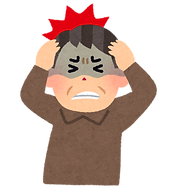What is a stroke?

Strokes occur when the blood supply to a part of the brain is cut off. Brain cells are deprived of oxygen and will begin to die. Without oxygen, certain functions of the body are affected. Depending on which parts of the brain are affected, patients with stroke develop a range of symptoms.
Symptoms usually occur suddenly and may include weakness and/or numbness of the face, arms and/or legs, as well as speech, language, visual, balance and/or cognitive deficits.
Signs of stroke
It has been estimated that for every minute that an acute stroke is not treated, approximately 1.9 million neurons in the brain will die. Therefore, it is vital that any individual who develops neurological symptoms of sudden onset that are suspicious of a stroke seek immediate medical attention to facilitate timely assessment and treatment as soon as possible. Recognition of these symptoms can potentially reduce the level of brain damage and long-term disability.
Typical symptoms of stroke include sudden onset of:


Weakness of the face, arms and/or legs
(usually on one side of the body)
Slurred speech, Impaired language
e.g. difficulty in expressing oneself, confused or lack of speech

Double vision or
loss of vision

Feeling vertiginous (spinning sensation) and/or
loss of balance


Severe headache
Remember the stroke symptoms "FAST":
配圖由いらすとや集提供
Type of Stroke
There are two main types of stroke – ischaemic and haemorrhagic.
Haemorrhagic Stroke(20%)
Haemorrhagic stroke occurs when a blood vessel supplying the brain tissue suddenly bursts, resulting in bleeding within the brain and subsequently affecting the brain’s blood supply. The increasing size of the bleed will damage the function of brain cells and cause cell necrosis.
Risk factors include:
-
increasing age
-
hypertension
-
blood vessel abnormality such as an cerebral hemangioma, cerebral arteriovenous malformations and brain tumors
-
An underlying blood clotting disorder that requires treatment with antiplatelet or anticoagulant drugs and haematological disease-related coagulation disorders
-
Illegal drugs abuse
配圖由いらすとや集提供

Rupture of blood vessel
Ischaemic stroke (80%)
Ischaemic stroke is due to a blockage of the blood vessels supplying the brain. This is most commonly due to atherosclerosis but can also be due to blood clots forming within the heart (most commonly due to a trial fibrillation) which can then travel to the brain and block the blood flow. Brain cells will become dysfunctional and may be permanently damaged.
Risk factors leading to ischaemic stroke include:
-
increasing age
-
hypertension
-
high cholesterol
-
diabetes
-
obesity
-
smoking
-
atrial fibrillation (a condition where the heart beats irregularly)
-
Poor diet (low in fruits and vegetables, high in sodium)
-
Lack of physical activity
-
Obstructive sleep apnoea

Blockage of blood vessel
A transient ischaemic attack
(commonly referred to as a TIA)
A transient ischaemic attack, commonly referred to as a TIA, presents with symptoms of stroke that resolve completely within 24 hours. It is considered a warning sign and 20% of these patients may go on to suffer a stroke over the next 3 months.
Although symptoms of TIA may resolve, it is vital that the underlying causes are identified and appropriate treatment initiated so that patients do not subsequently develop a disabling stroke as a result of silently advancing pathophysiological changes. It is crucial that individuals seek medical help if they develop symptoms suspicious of a TIA.

